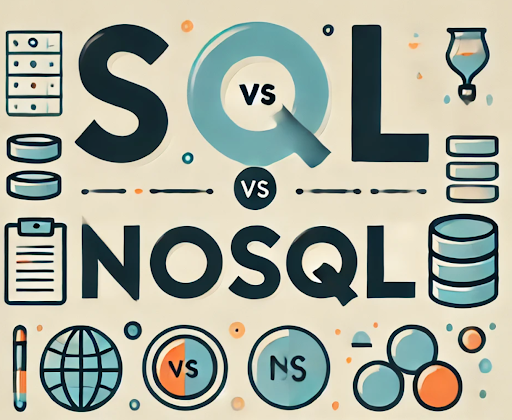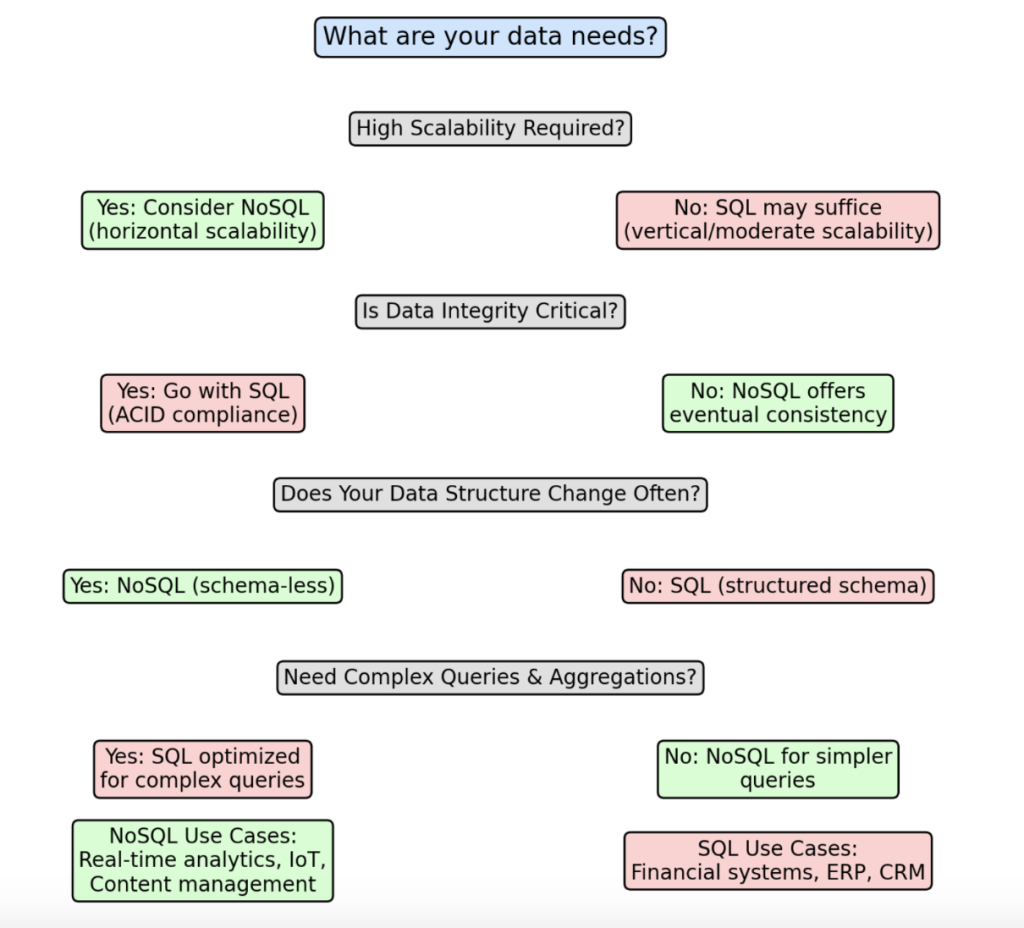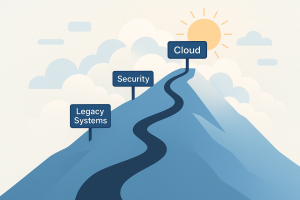NoSQL databases have gained traction in recent years for applications that require flexibility, scalability, and the ability to handle diverse data types. Their appeal is especially strong in industries with high data velocity and variety, such as e-commerce, IoT, and social media. However, traditional relational databases (SQL) remain a mainstay, particularly in industries where data integrity and complex querying are essential. This article explores the differences between NoSQL and SQL databases, examining the advantages and drawbacks of each to help technical leads and decision-makers choose the right fit for their projects.

Understanding SQL and NoSQL Databases
NoSQL databases (Not Only SQL) were developed to handle unstructured or semi-structured data without requiring a fixed schema. There are four primary types of NoSQL databases, each designed for specific data patterns and use cases:
- Document Stores: These databases, such as MongoDB and CouchDB, store data in flexible, JSON-like documents. Each document can contain different fields, making this structure well-suited to applications with varied or hierarchical data.
- Key-Value Stores: In databases like Redis and DynamoDB, data is stored in simple key-value pairs. This model is highly efficient for quick data retrieval and is commonly used for caching or storing session data.
- Column-Family Stores: Databases like Cassandra and HBase organize data in columns rather than rows, optimizing for large volumes of data and fast retrieval. Column-family stores are effective for time-series data or analytics applications.
- Graph Databases: Databases like Neo4j store data in nodes, edges, and properties, making them ideal for applications with complex relationships, such as social networks, recommendation engines, or fraud detection systems.
Relational databases (SQL), by contrast, rely on structured, table-based storage with a predefined schema. SQL databases use a standardized query language (SQL) to interact with data, making them highly consistent and suitable for complex querying needs. This structure works best when data integrity, reliability, and transaction support are paramount.
Benefits of NoSQL Databases
- Scalability: NoSQL databases are designed for horizontal scaling, meaning they can expand by adding more servers or nodes to distribute data across a cluster. This scalability model is crucial for high-traffic applications, such as streaming platforms, where millions of transactions may occur simultaneously.
- Schema Flexibility: Unlike SQL databases, which require a rigid schema, NoSQL databases are schema-less, allowing developers to store data without predefined structures. This flexibility makes NoSQL a strong choice for agile environments where requirements change frequently, as it eliminates the need to restructure the database every time new data fields are added.
- High Performance for Certain Workloads: NoSQL databases often offer significant speed advantages in read and write-heavy applications. Key-value stores, for example, can retrieve cached data in sub-millisecond times, which is essential for real-time applications like online gaming, where low latency is critical.
- Support for Diverse Data Models: NoSQL databases support various data models, each optimized for a specific data pattern. Document stores work well for hierarchical data structures, while graph databases efficiently represent relationships between entities. This flexibility allows organizations to choose a data model that aligns closely with their application’s requirements, enhancing performance and usability.
Limitations of NoSQL Databases
While NoSQL databases offer many advantages, they also come with trade-offs that can limit their effectiveness in certain applications:
- Lack of Standardization: Unlike SQL, NoSQL databases each have their own query language or API, making them more difficult to learn and manage. This lack of standardization can lead to vendor lock-in, as switching between different NoSQL systems requires substantial changes to application code and workflow.
- Consistency Trade-offs: Many NoSQL databases follow the CAP theorem, which states that in distributed systems, it’s difficult to achieve consistency, availability, and partition tolerance simultaneously. To maintain high availability and partition tolerance, many NoSQL databases sacrifice consistency. This can be problematic in applications where accurate, real-time data is essential, such as e-commerce transactions or financial systems.
- Complex Query Limitations: NoSQL databases handle simple queries well but often struggle with complex aggregations, joins, and transactions. Relational databases, with their mature query optimization and indexing techniques, are better suited to data-heavy applications that require detailed analysis, reporting, or multi-table queries.
- Limited ACID Compliance: While some NoSQL databases have recently introduced ACID-like support, they generally do not match the transaction reliability and data integrity provided by relational databases. Applications that require high data integrity, such as banking, healthcare, or inventory management, may find these limitations restrictive.
Characteristic | SQL | NoSQL |
Data Structure | Relational (tables with rows and columns) | Non-relational (document, key-value, wide-column, graph) |
Scalability | Vertically scalable (increasing capacity of a single server) | Horizontally scalable (adding more servers) |
Performance | Better for complex queries and transactions | Optimized for high volume, simple read and write operations |
Consistency | Strong consistency (ACID compliance) | Eventual consistency (BASE model), though some NoSQL databases can be configured for strong consistency |
Flexibility | Fixed schema (defined before use) | Flexible schema (dynamic data structure) |
Why Many Still Use Relational Databases
Despite the flexibility and scalability advantages of NoSQL databases, many organizations continue to rely on relational databases due to their strong data integrity and transaction support. Here are some reasons why SQL databases remain a popular choice:
- Data Integrity and Transaction Support: SQL databases are inherently designed for ACID compliance, which ensures reliable transactions and data consistency. This makes SQL databases the go-to option for applications requiring accurate data handling, such as financial systems, e-commerce checkout processes, and compliance-focused industries.
- Established Ecosystem and Tooling: SQL databases have been around for decades, resulting in a mature ecosystem with a vast selection of tools, frameworks, and resources. This ecosystem simplifies database management, performance tuning, and troubleshooting, making SQL databases a stable choice for enterprise applications.
- Compatibility with Legacy Systems: Many organizations have built their core infrastructure around relational databases, relying on them for essential data processing. Migrating from SQL to NoSQL can be costly and time-consuming, requiring retraining, infrastructure adjustments, and potential system downtimes.
Use Cases for NoSQL vs. SQL

NoSQL Best Fits:
- Real-time Analytics: NoSQL’s high-speed read/write capabilities and scalability make it ideal for handling large data volumes in real time, such as clickstream data analysis or social media metrics.
- Content Management Systems (CMS): Document-oriented NoSQL databases provide flexibility for storing diverse content types, allowing developers to adapt quickly to changing content requirements.
- Internet of Things (IoT): NoSQL databases are well-suited to manage the high velocity of time-series data generated by IoT devices, offering efficient ingestion and querying.
- Social Networks: Graph databases efficiently store and query complex user relationships, making them a preferred choice for social media platforms and recommendation engines.
SQL Best Fits:
- Financial Systems: SQL databases offer transaction support and data integrity, essential in applications where accuracy is critical, like banking, trading platforms, and billing systems.
- ERP Systems: Enterprise Resource Planning (ERP) systems involve complex queries and require strong data consistency, both of which are well-supported by relational databases.
- Customer Relationship Management (CRM): CRMs benefit from SQL databases’ ability to handle structured data and complex querying, essential for tracking customer interactions, reporting, and analytics.
Conclusion
NoSQL databases bring valuable benefits in terms of scalability, flexibility, and performance, particularly for applications that handle large volumes of unstructured data or need to scale horizontally. However, NoSQL is not a universal solution. Relational databases continue to dominate in areas where data integrity, complex queries, and robust ecosystem support are essential. By understanding the strengths and limitations of each type, technical leads and decision-makers can make informed choices that align with their project’s specific needs and long-term goals.






